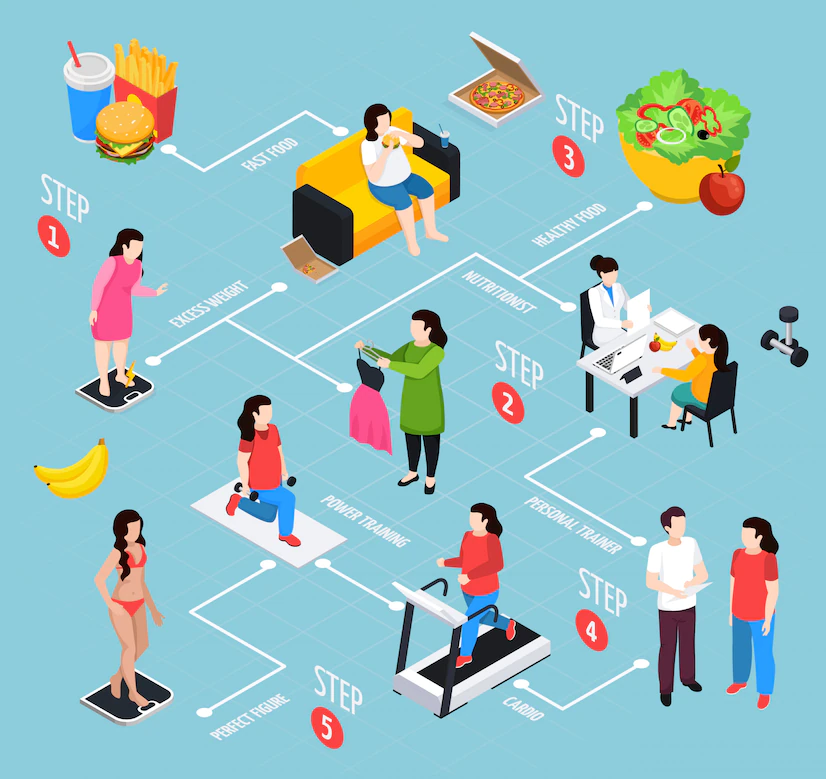Diabetes is a disease that occurs when the pancreas does not produce enough insulin (a hormone that regulates glucose concentration in the blood) or the body cannot effectively use the insulin it produces.
In 1997, following an agreement formulated by the Expert Committee of the American Diabetes Association (ADA) and the World Health Organization (WHO), a new classification of diabetes was proposed based on screening and diagnosis methods. For this reason, the terms Insulin-dependent and Non-insulin-dependent due to Diabetes Mellitus Type 1 and 2 were eliminated.
1) Diabetes Mellitus Type 1
It is characterised by the destruction of the pancreas’s insulin-producing cells, which usually leads to an absolute deficiency of the hormone. Therefore insulin injections are required to survive. Its cause may be autoimmune or idiopathic.
2) Diabetes Mellitus Type 2
It is characterised by the deficit of the pancreas to produce insulin and the body’s resistance to it. Before, it was presented exclusively in adults (that is why it used to be called “Adult Diabetes”), but in recent years cases in children and adolescents have multiplied.
3) Alterations in glucose metabolism
The intermediate metabolic state between normality and diabetes includes a) impaired fasting blood glucose and b) impaired glucose tolerance. It constitutes a risk for diabetes and cardiovascular disease.
4) Gestational diabetes
It is an impaired glucose tolerance of variable severity that begins or is first recognised during an ongoing pregnancy. It may be due to previously undiagnosed diabetes or an alteration of the hydrocarbon metabolism that persists until the end of the gestational stage.
5) Other specific types
Other forms of diabetes are caused by genetic etiologies, pancreas diseases, endocrinopathies, drugs, infections or immune processes.
Advertising
- Some statistical data
- Four hundred twenty-two million adults had diabetes in 2014 compared to 108 million in 1980.
- 1.5 million people died from diabetes in the world in 2012.
- Four million people died from diabetes in the world in 2017.
- 2.2 million died from hyperglycemia and associated disorders worldwide in 2012
- 43% of deaths from diabetes worldwide occur before the age of 70, with the highest percentage in low- and middle-income countries.
- 95% of adult diabetes cases are Type 2, which is preventable.
- 30 to 40% of people with diabetes in the Americas are undiagnosed.
- 50 to 70% of diabetes cases in America are uncontrolled
- 5% of cases of premature mortality in the Americas between 2000 and 2016 were due to diabetes.
- It ranked sixth in 2019 in causes of sudden death in the Americas.
- It ranked second in Disease-Adjusted Life Years in America in 2019.
- It is estimated that treating diabetes cases in Latin America and the Caribbean costs 65 billion dollars a year, of which 10 billion were for direct expenses and the rest for indirect consequences.
- In Argentina, 10% of people over 18 years of age have diabetes, and 40% are unaware that they have it, so they are not treated.
- Source: World Health Organization (WHO) and article by Luciano Andrés Valencia.
Nursing and diabetes
Since there is still no cure for this disease, nursing has become a fundamental discipline to promote self-care for people with diabetes and accompany them in their treatment. Today a person with diabetes can lead the same life as any other, taking into account a series of precautions and special care.
Carry out a correct evaluation of the patient
- Carry out educational interventions
- Carry out the appropriate controls
- Encourage physical activity of the patient.
- Intervention in case of physical or sensory disabilities
Where to get training on this topic?
The Argentine Society of Diabetes (SAD) offers a variety of Diplomas and Online Courses on Diabetes and its complications. The University and the Favaloro Foundation offer a University Diploma in Diabetes Mellitus. UCS also has a University Diploma in Diabetic Foot and Wounds. A Professional Master’s Degree in Diabetes Mellitus can be completed at the Austral University. The Italian Hospital offers a Master’s Degree in Cardiovascular Risk Factors, Diabetes and Vascular Disease. The Argentine Catholic University (UCA) has two qualifications that can be considered: the Higher Postgraduate Course in Diabetes and Metabolism and the postgraduate in Clinical Management of Arterial Hypertension. Those who live in Patagonia can opt for the Postgraduate Course in Diabetes Mellitus for Nursing Personnel and Health Teams of the Neuquén Medical College.
The University Institute of the Italian Hospital (IUHI) offers a Master’s Degree in Education for Health professionals, which provides tools to better disseminate and educate on health issues.


